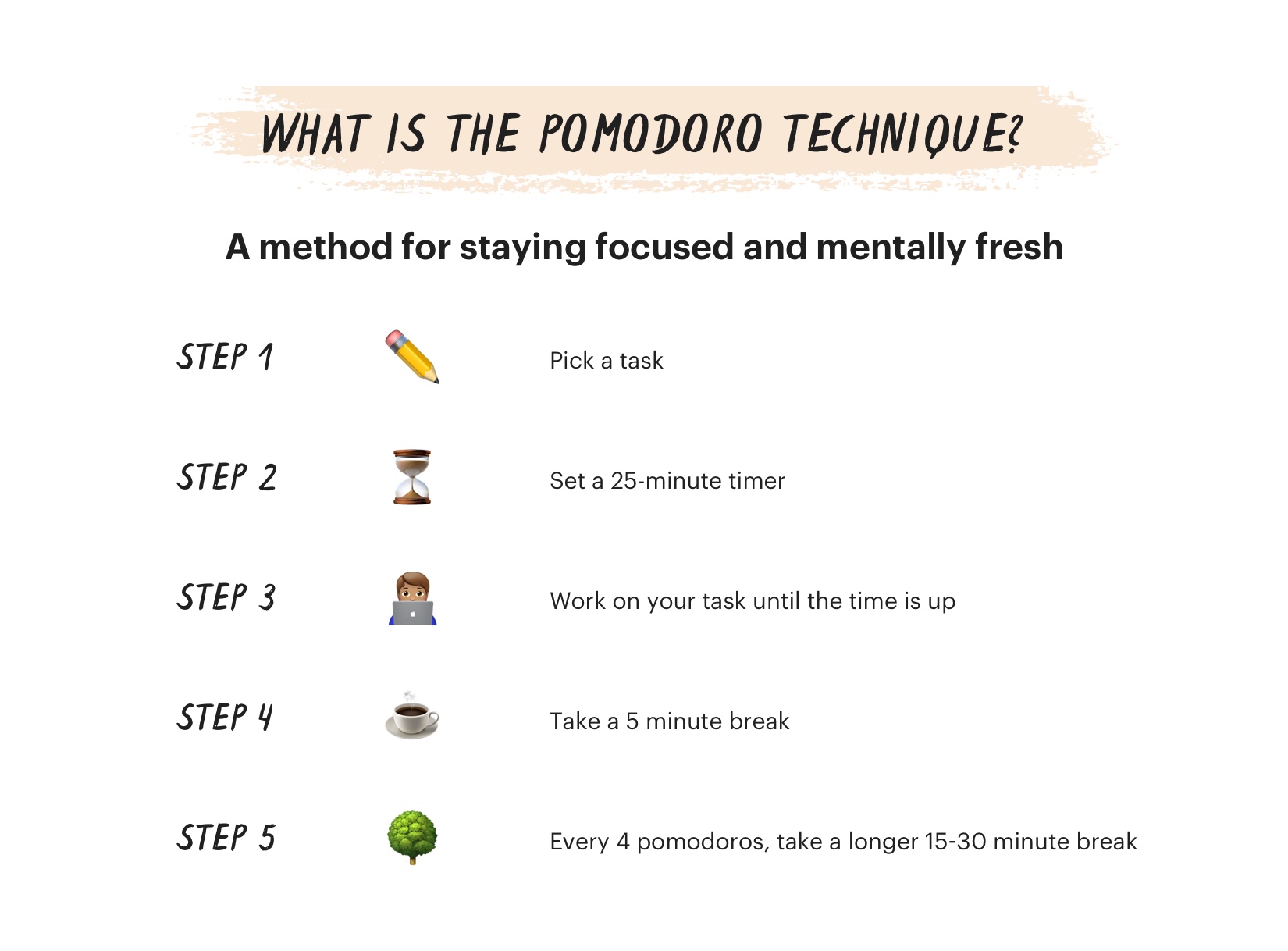Do you know the Pomodoro technique?

I believe most of you have downloaded a few quite useful app or timer to keep track of your progression. I use the Pomodoro technique and Pomodoro timer to avoid procrastination and to manage my time more effectively. This is because there is a fixed pattern to set the duration for you to work on your tasks and the duration for you to take a break and rest. Hence, you will be more consistent and efficient in accomplishing your tasks.
Here I am, to introduce you Pomodoro technique!

First of all, what is Pomodoro technique🍅⏲?
The Pomodoro Technique was developed in the late 1980s by a university student, Francesco Cirillo. Cirillo was struggling to focus on his studies and complete assignments. Feeling overwhelmed, he asked himself to commit to just 10 minutes of focused study time. Encouraged by the challenge, he found a tomato (pomodoro in Italian) shaped kitchen timer, and the Pomodoro technique was born.


The Pomodoro technique- a productivity method is perfect for anyone who finds that small distractions often derail the whole workday. The technique breaks the day down into “pomodoros” which are short, in-depth work sessions and with breaks in between to promote sustained focus and clarity of thought. Thus, each ‘pomodoro’ is an opportunity to start fresh. It beats procrastination and improves your focus one pomodoro at a time.
Here are a few steps about the technique:
- Get a to-do list and a timer.
- Set your timer for 25 minutes, and focus on a single task until the timer rings.
- When your session ends, mark off one pomodoro and record what you completed.
- Then enjoy a five-minute break.
- After four pomodoros, take a longer, more restorative 15-30 minutes break.

Should you have any time left after you finished a task, here are a few suggestions to you:
After task completion in a pomodoro, any time remaining could be devoted to activities such as:
- Review and edit the work just completed.
- Review the activities from a learning point of view: What did I learn? What could I do better or differently?
- Review the list of upcoming tasks for the next planned Pomodoro time blocks, and start reflecting on or updating those tasks.
Just in case any of you wants to know about the Pomodoro technique, here is the link.
There are some online Pomodoro timers in which you can just google search the keywords. I have one suggestion here, in which you can customize the timer yourself.
Although I just provide a few simple details, I hope it helps those who want to avoid procrastination and improve their effectiveness.
